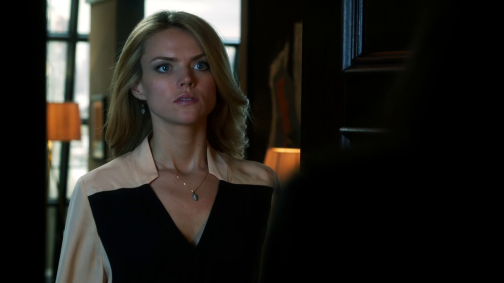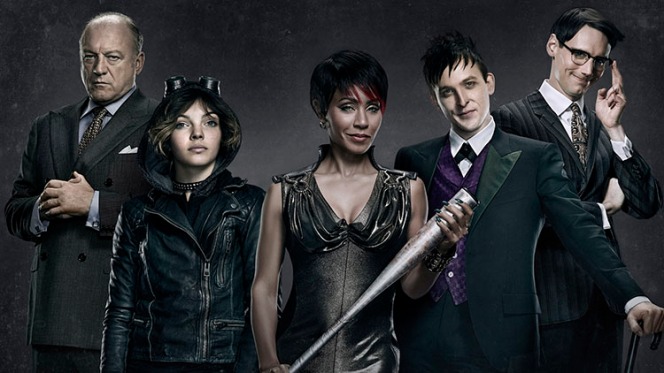Gotham is hardly an exact replica of the Batman mythos most viewers are familiar with. But that doesn’t mean they’re getting it wrong all the time either. And to be fair, Batman comprises a huge world filled with intricate characters and their winding histories. Even Gotham City is like an unofficial character, with a voice and a heartbeat that thrives on crime, corruption, and dark secrets tucked away in smoky alleys.
There’s a distinct identity here and an even more distinct mood and atmosphere that viewers are expecting to capture that Batman essence. But this is a lofty chore, and Batman purists will probably find themselves at odds with the final product no matter what.
And Gotham is hardly expected to follow the Batman comics or other works as if they’re one-direction maps; they just need to give the audience what it wants, but not necessarily what it expects. However, some of the series’ choices have left viewers a little confused, especially with how far they stray from the source material because they’re not sure why they need to.
 Adding new characters to the Batman world (if done properly) could be a good idea. Yes, there are already plenty; but if this new character has a well-developed persona, story, and even manages to enhance other characters, then it should be attempted. Fish Mooney (Jada Pinkett Smith) is a new character to the Batman world. Initially, she seems like an exciting addition to the series. She’s tough, rebellious, and has significant power in Gotham’s organized crime, not to mention she’s doing all this in high heels.
Adding new characters to the Batman world (if done properly) could be a good idea. Yes, there are already plenty; but if this new character has a well-developed persona, story, and even manages to enhance other characters, then it should be attempted. Fish Mooney (Jada Pinkett Smith) is a new character to the Batman world. Initially, she seems like an exciting addition to the series. She’s tough, rebellious, and has significant power in Gotham’s organized crime, not to mention she’s doing all this in high heels.
But her character is a bit ill conceived; her presence facilitates Oswald Cobblepot’s (Robin Lord Taylor) rise in the crime world, and that’s about it. She tries to overthrow Falcone (John Doman), gets undermined by Cobblepot, flees Gotham, meets and escapes Dollmaker (Colm Feore), returns to Gotham to reassert herself as queen, and falls from a rooftop to her death. It seems strange to do all this character inventing just to erase her in the end.
But in this case, it’s probably for the best.
 There’s a bit of a complication in having Fish Mooney kill mobster Sal Maroni (David Zayas). As most Batman fans know, “Don Maroni is supposed to be the guy who scars Harvey Dent (Nicholas D’Agosto) and creates Two-Face” (Mike Cecchini, DenofGeek.us). Since this is obviously not going to be the case on Gotham, one can only wonder what the show has in mind for Harvey Dent’s transformation.
There’s a bit of a complication in having Fish Mooney kill mobster Sal Maroni (David Zayas). As most Batman fans know, “Don Maroni is supposed to be the guy who scars Harvey Dent (Nicholas D’Agosto) and creates Two-Face” (Mike Cecchini, DenofGeek.us). Since this is obviously not going to be the case on Gotham, one can only wonder what the show has in mind for Harvey Dent’s transformation.
Clearly they’re not 100% concerned with doing things by the Batman book, but this doesn’t necessarily spell disaster. This gives Gotham a chance to make things even more interesting, to bring even more to the table and make the series more of an original creation that’s not completely reliant upon a beloved mythos. But if they don’t deliver with their new material and ideas, it’s only going to make viewers question why they deviated from such solid source material in the first place.
 Typically when the Joker is portrayed (Cameron Monaghan) in DC comics or the Batman franchise, he’s shrouded in mystery. There is little to nothing available on his past, upbringing, or family life. However, when viewers are introduced to Gotham’s take on the character, they’re presented with the young boy Jerome, whose mother is a snake dancer with Haly’s Circus, also giving him a connection to the Grayson family.
Typically when the Joker is portrayed (Cameron Monaghan) in DC comics or the Batman franchise, he’s shrouded in mystery. There is little to nothing available on his past, upbringing, or family life. However, when viewers are introduced to Gotham’s take on the character, they’re presented with the young boy Jerome, whose mother is a snake dancer with Haly’s Circus, also giving him a connection to the Grayson family.
It also turns out that Jerome murdered his mother, already hinting at his severe and dangerous mental instability. This certainly gives the Joker a more detailed and colorful past, but it also tarnishes his enigmatic eeriness; knowing less about such a famous, sinister villain enhances his unpredictability and the fear he brings to Gotham City.
 One detail that’s also typically accepted about the Joker is his membership and affiliation with the Red Hood Gang. Gotham does deliver an episode on said gang (“Red Hood,” which is the episode following the Joker’s intro, “The Blind Fortune Teller”), but it’s hard to imagine how this can be applied to the Joker at this point, especially considering the timeline the series has adopted.
One detail that’s also typically accepted about the Joker is his membership and affiliation with the Red Hood Gang. Gotham does deliver an episode on said gang (“Red Hood,” which is the episode following the Joker’s intro, “The Blind Fortune Teller”), but it’s hard to imagine how this can be applied to the Joker at this point, especially considering the timeline the series has adopted.
The Joker was the Red Hood at one point, which actually led him to becoming the Joker: He and the Red Hood Gang were robbing a chemical plant, when Batman cornered him, leaving him with nowhere to run. Desperate to flee, he dropped into a vat of chemicals and was able to swim away, but at the expense of permanent disfigurement. His hair turned green, his skin became pale, and his lips were permanently tinged red.
This event proved to be a tipping point for the Joker, making him even more insane. It’s doubtful Gotham is going to follow through with this comic reference, but that does create worry in how they’re going to handle a new path for the Joker when his original path is so cemented in our minds.
The changes the series has adopted thus far aren’t necessarily deal breakers, but the more senseless the changes appear to be, the more the audience is going to worry. There needs to be some familiarity and strong connection to Batman mythology, otherwise there’s really no point in Gotham exploring this world.
Reinterpretation of Batman lore is to be expected, but when viewers can no longer recognize the heroes, the villains, the city, and the message, then it’s time to go back to the beginning. Gotham has a chance to make this special world even more special; let’s hope they do it justice.






